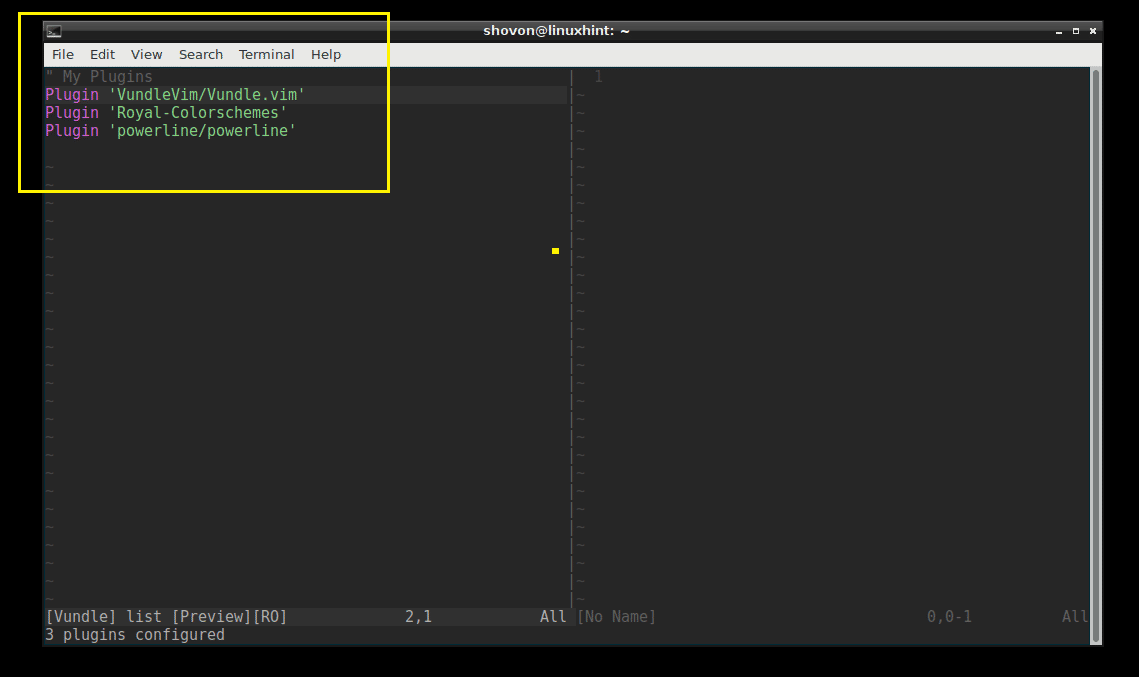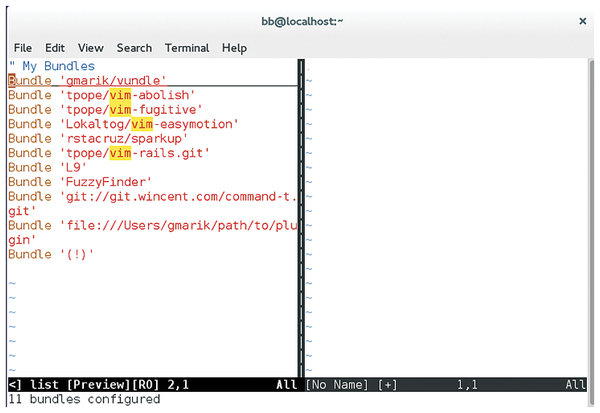

The opt directory is for optional plugins.

INSTALLING VIM PLUGINS MANAGER INSTALL
Creating a ‘bundle’ packageĬreate a package called bundle where you’ll install your plugins: mkdir -p ~/.vim/pack/bundle/startĪny plugins that you install in the start directory will be added to your runtimepath when Vim starts up. Then you might create another package called myplugins where you keep the plugins that you maintain by yourself. For example, you might create one package called bundle where you install plugins written by other people. You can create as many packages as you like. Your package should contain a subdirectory called start, which is where you install the plugins that you want to load when Vim starts up. When you organise your plugins in a package, Vim can automatically add those plugins to your runtimepath on startup.īy convention, you create packages within a. What’s a Package?Ī package is a directory that contains one or more plugins. With version 8, Vim released the packages feature to fill this gap. You had to do it by hand, or you had to install a plugin such as pathogen to automate the runtimepath management. Vim has supported plugins since version 6, but until recently there was no convenient way of managing the runtimepath. You could manipulate the runtimepath by hand: set runtimepath +=~ /.vim/arbitrary/demo -plugin To install this plugin, you would add the top-level demo-plugin directory to Vim’s runtimepath. The purpose of a plugin is to add new functionality to Vim, or to modify Vim’s existing functionality.Ī demo-plugin containing one script and an accompanying documentation file might look like this: demo-plugin Otherwise, read on… What’s a Plugin?Ī plugin is a directory containing one or more scripts (usually with documentation). If that makes sense, you can skip the next two sections. Optionally you may start nvim with the -u flag and tell it what you wish to use as your initialization file, so you can just nvim -u ~/.vimrc.įinally you may add the following in your terminal initialization file(.bashrc/.zshrc or whatever terminal you're using) alias vim='nvim -u ~/.It’s easy to confuse the terms package and plugin, so let’s start by defining the terminology:Ī plugin is a directory containing one or more scripts.Ī package is a directory containing one or more plugins.

Create a symbolic link to a file (or folder): If you still wish this file in you home directory than you may symlink it there with: ln You'll see there all the info you're looking for. Other plugin managers you may want to try: dein, minpac, plugpac (a wrapper around minpac).
INSTALLING VIM PLUGINS MANAGER HOW TO
Follow the documentation of vim-plug to learn how to use it. You can use it both on Windows, Linux, and Mac. You can find my example configuration here for a reference.Īs for installing plugins, it is easy for beginners to use a plugin manager to do all the chores for you. You can also use the command :echo stdpath('config') inside neovim to find the config directory.Īll your settings can be put into this file.



 0 kommentar(er)
0 kommentar(er)
